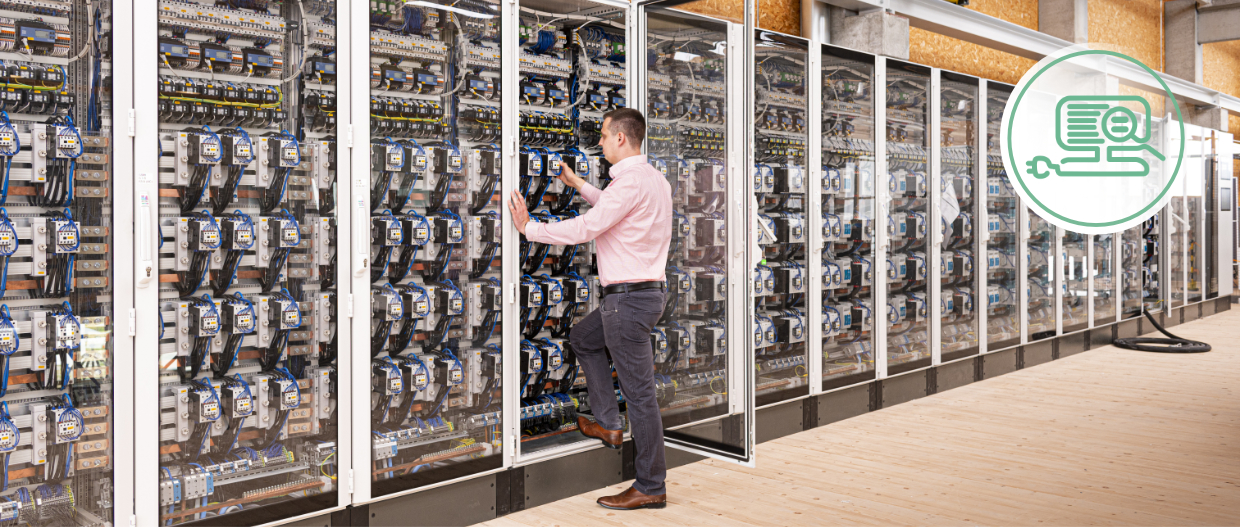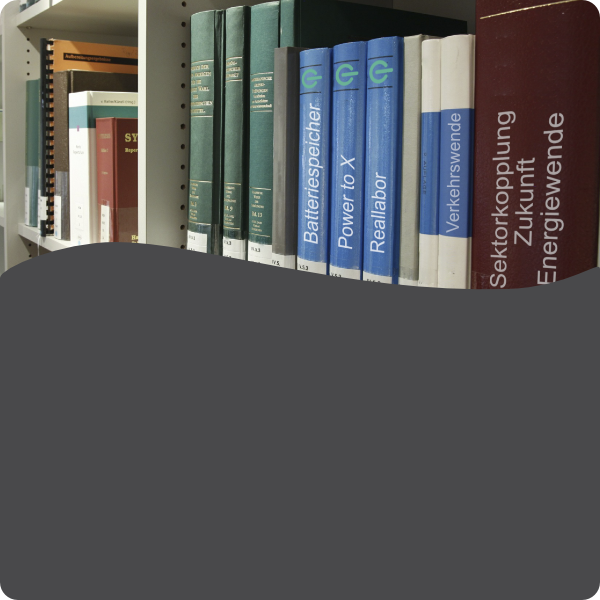The Smart Energy System Control Laboratory combines theory with practice. Many questions relating to the energy transition can only be answered with extensive simulations and complex models of energy grids, feeders, storage systems and consumers. Precise models of the system components are an important prerequisite for this. The physical presence of the systems in SESCL creates a constant reference to reality and thus facilitates the implementation of the research results in real grid environments. Because the experimental field is electrically isolated from the public grid, control strategies can also be permitted and investigated in borderline areas. In addition, operating points can be controlled that approach the stability limits. Such experiments would not be permitted in the public grid.
The energy transition cannot be planned on computers alone, nor can all new ideas be tested on the public grid straight away. Experimental facilities are needed to investigate innovations in practice. SESCL was established with funding from the Baden-Württemberg Ministry of Science, Research and the Arts(MWK). Representatives of the most important machines and devices in electricity grids and heat supply systems are installed in SESCL. Because electricity will be of great importance in the heating market and for mobility in the future, heat pumps and charging stations, for example, have been purchased and implemented.
Of course, only a limited number of components can be physically connected to a grid in a laboratory environment. Therefore, adjacent power grids are simulated using Power Hardware in the Loop (PHIL) systems. Behind this are real-time simulation systems as well power amplifiers that can realize a calculated power consumption or a power feed-in. Within SESCL, the busbar matrix is the central element for intelligently linking energy technology components such as power generators, consumers, storage units, transmission lines and other grid resources. Overall, the key advantages of SESCL are (i) the provisioning of a fully-automated busbar matrix to provide a very flexible and adjustable microgrid topology; (ii) the capability of load shedding or integration of grid participants, as well as changing the microgrid topology on demand; (iii) and the possibility to control and modify setpoints and operating parameters of grid participants during runtime.
Research topics and objectives
- Integration of distributed renewable energy sources into a microgrid
- System stability analysis (voltage, frequency and rotor angle stability) in inverter-dominated grids
- Validation of new control strategies in an experimental environment
- Behavior of the microgrid in relation to the overall grid
- Behavior of largely self-sufficient cells (e.g. experimental houses) in relation to the microgrid
Equipment
Busbar matrix
- Eight AC, two DC busbars, 71 connection points and over 400 contactors
- High-frequency data acquisition in the AC domain at 20 kHz and in the DC domain at 100 kHz.**
- Topology-free automated interconnection and ITC linking of AC/DC systems
LLEC experimental building incl. its individual energy systems
- Heat pump house
- Power house
- Gas2Heat house
Electrical consumers
- RLC loads
- Synchronous and Induction motors
- End Consumer Installation and Devices
- Inverter-based resources
Power generator
- Public grid
- Emergency power system
- Motor-Generator Set
- Low Power Wind Turbines
- Power amplifier as power-hardware-in-the-loop system
Prosumer
- Supercaps
- Lithium-ion battery storage
- Flywheel mass storage
Reactive power components
- Capacitors
- Inductors
- Phase shifters
- FACTS (Flexible Alternating Current Transmission System)
Mobility components
- Battery electric vehicles
- Electric vehicle supply equipment
Grid equipment and other components
- Transmission lines (TRLs) and their adjustable replicas
- Transformers and On-load tap changer (OLTC)
- AC/DC converters
- converters
→ to the detailed SESCL laboratory equipment






